Keynotes at ISQED 2014
- Check out selected keynotes from previous years.
Tuesday & Wednesday March 4-5
A New Era of Computing: Are You "Ready Now" To Build A Smarter and Secured Enterprise?
 Jacqueline Woods
Jacqueline WoodsGlobal Vice President of Growth Solutions, STG
IBM
Jacqueline Woods - Global Vice President of Growth Solutions, STG, IBM
We are experiencing fundamental changes in how we interact, live, work and succeed in business. To support the new paradigm, computing must be simpler, more responsive and more adaptive, with the ability to seamlessly move from monolithic applications to dynamic services, from structured data at rest to unstructured data in motion, from supporting standard device interfaces to supporting a myriad of new and different devices everyday. IBM understands this need to integrate social, mobile, cloud and big data to deliver value for your enterprise, so join this discussion, and learn how IBM helps customers leverage these technologies for superior customer value.
About Jacqueline Woods
Ms. Woods is the Global Vice President of Systems Software and Growth Solutions for the IBM Corporation. In this role, she leads the organization's marketing for Cloud, Analytics and Technical Computing. She's also drives business development for Competitive Independent Software Vendors, such as SAP and leads the Transformation account strategy for the division. In total, this represents a portfolio totaling ~ $ 12B. In this role she creates "blueprints for growth" designed to profitably accelerate sales. By building partnerships among channels (direct, indirect, and online) and other constituents (sales, operations, etc.), she unifies teams for a singular winning purpose. Her collective experience and body of work includes consumer and enterprise organizations for the Communications Sector (Energy, Telco, Media & Entertainment), the Financial Sector (Retail Banking, Commercial and Insurance), Distribution Sector (Consumer Packaged and Retail) and the Industrial Sector (Chemical, Petroleum and Electronics). In each of her roles, she's specialized in helping C-level executives of Fortune 500 companies reach their goals through a designed approach, which at its core is focused on understanding customer needs more effectively and driving growth based on those needs. These efforts have generated more than a billion dollar in revenue across the following sectors – Communications, Energy, Industrial, Transportation, and Financial Services. Ms. Woods was featured in Fortune Magazine's 50 Most Powerful Black Executives in America in 2003, Ebony's Top 15 Women in Business in America in 2004, and Black Enterprise's Top 50 Black Female Executives in February 2006. She's also been featured in the NY Times and Wall Street Journal. She's also presented at Harvard, the Kennedy School of Government, the Organization for Cooperative Economic Development, and various customer experience and marketing conferences. Ms. Woods is a Merit Fellow and holds an MBA from the University of Southern California, Marshall School of Business, with a concentration in marketing and venture management. She holds a BS from the University of California, Davis in Managerial Economics. She also served as member of the Dean's Council for the Kennedy School of Government, Harvard University from 2003-2009.
Foundation for Trustworthy Platforms
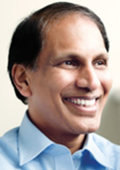 Sridhar Iyengar
Sridhar IyengarDirector of Security and Privacy Research
Intel
Sridhar Iyengar - Director of Security and Privacy Research, Intel
In the last decade, malware attacks on our platforms have exploded in frequency, sophistication and virulence. Billions of smart devices connect to servers in the cloud, all transporting, processing and storing our most sensitive data. All this forms a large threat surface that is becoming increasingly hard to protect against a determined adversary. This talk will address key security research leading to silicon features on Intel platforms. These provide a strong foundation to proactively combat malware, provide the necessary acceleration for encryption and enhancements for better isolation and data protection. The talk will also address how software can and should take advantage of the hardware features to address the challenges of security in a connected world.
About Sridhar Iyengar
Sridhar has been at Intel for 30 years in various technical, research and managerial capacities, both in the labs and product groups. He is currently the Director of Security and Privacy Research, a group that is chartered to drive game-changing technologies to make "trustworthiness" a fundamental aspect of Intel platforms. He holds a Bachelor of Technology in Electrical Engineering from IIT Madras and a Masters in Computer Science from the University of Wisconsin, Madison.
Cloud-Delivered Security for the Mobile Enterprise
Amit Sinha - EVP Engineering and Operations, Chief Technology Officer, Zscaler
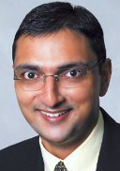 Amit Sinha
Amit SinhaEVP Engineering and Operations, Chief Technology Officer
Zscaler
The adoption of Mobility, Cloud and Social Media is driving businesses to spend more on the deployment of costly appliance-based point solutions for Internet security that still leave significant gaps in coverage. Appliances also accrue additional costs due to administration overhead and backhauling of traffic to a central locations for inspection and policy enforcement. Cloud-delivered security can provide a safe and rich Internet experience for users on any device at any location, without requiring organizations to manage any hardware or software. Enterprises can eliminate appliance and backhauling costs by enabling their traffic to directly go to the Internet via a Security Cloud. This talk will focus on how to build and run a global Security Cloud that can protect millions of users across thousands of organizations.
About Amit Sinha
Dr. Amit Sinha is skilled entrepreneur and leader, having driven research and development of disruptive security and wireless technologies for multiple market-leading organizations, including Zscaler, Motorola, AirDefense and Engim. At Zscaler, Sinha is responsible for all engineering and operations of Zscaler's Security Cloud—from product design, development, testing to managing and scaling the cloud. Sinha earned his MS and PhD in Electrical Engineering and Computer Science from the Massachusetts Institute of Technology and his B.Tech. in Electrical Engineering from the Indian Institute of Technology, Delhi where he was awarded the President of India Gold Medal for graduating summa cum laude. He holds 27 US patents and has contributed to three books and dozens of conference and journal papers.
Carbon Nanotube Computer: Transforming Scientific Discoveries into Working Systems
Subhasish Mitra - Professor and Director of the Robust Systems Group, Stanford University
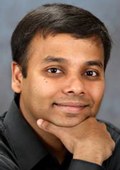 Subhasish Mitra
Subhasish MitraProfessor and Director of the Robust Systems Group
Stanford University
Carbon Nanotube Field Effect Transistors (CNFETs) are excellent candidates for building highly energy-efficient future electronic systems. Unfortunately, carbon nanotubes (CNTs) are subject to substantial inherent imperfections that pose major obstacles to the design of robust and very large-scale CNFET digital systems: It is nearly impossible to guarantee perfect alignment and positioning of all CNTs. This limitation introduces stray conducting paths, resulting in incorrect circuit functionality. CNTs can be metallic or semiconducting depending on chirality. Metallic CNTs cause shorts resulting in excessive leakage and incorrect circuit functionality. A combination of design and processing techniques overcomes these challenges by creating robust CNFET digital circuits that are immune to these inherent imperfections. This imperfection-immune design paradigm enables the first experimental demonstration of the carbon nanotube computer, and, more generally, arbitrary digital systems that can be built using CNFETs. Monolithically integrated three-dimensional CNFET circuits will also be discussed. This research was performed at Stanford University in collaboration with Prof. H.-S. Philip Wong and several graduate students.
About Subhasish Mitra
Professor Subhasish Mitra directs the Robust Systems Group in the Department of Electrical Engineering and the Department of Computer Science of Stanford University, where he is the Chambers Faculty Scholar of Engineering. Before joining Stanford, he was a Principal Engineer at Intel Corporation. Prof. Mitra's research interests include robust system design, VLSI design, CAD, validation and test, and emerging nanotechnologies. His X-Compact technique for test compression has been key to cost-effective manufacturing and high-quality testing of a vast majority of electronic systems, including numerous Intel products. X-Compact and its derivatives have been implemented in widely-used commercial Electronic Design Automation tools. The QED and IFRA techniques, created jointly with his students, have shown outstanding results in overcoming critical bottlenecks in post-silicon validation and debug for several commercial hardware platforms, and have been characterized as "breakthrough" in a Research Highlight in the Communications of the ACM. His work on carbon nanotube imperfection-immune digital VLSI, jointly with his students and collaborators, resulted in the demonstration of the first carbon nanotube computer, and it was featured on the cover of NATURE (Sept. 2013). The National Science Foundation presented this work as a Research Highlight to the United States Congress, and it also was highlighted as "an important, scientific breakthrough" by the BBC, Economist, EE Times, IEEE Spectrum, MIT Technology Review, New York Times, Scientific American, Time, Wall Street Journal, Washington Post, and numerous other organizations worldwide. Prof. Mitra's major honors include the Presidential Early Career Award for Scientists and Engineers from the White House, the highest United States honor for early-career outstanding scientists and engineers, Terman Fellowship, and the Intel Achievement Award, Intel's highest corporate honor. He and his students published award-winning papers at major forums on a wide range of topics spanning robust systems, VLSI design, validation and test, and nanotechnologies: IEEE/ACM Design Automation Conference, IEEE International Test Conference, IEEE Trans. CAD, IEEE VLSI Test Symposium, Intel Design and Test Technology Conference, and the Symposium on VLSI Technology. At Stanford, he was honored several times by graduating seniors "for being important to them during their time at Stanford." Prof. Mitra has served on numerous conference committees and journal editorial boards. Recently, he served on DARPA's Information Science and Technology Board as an invited member. He is a Fellow of the IEEE.
Can You Trust the Internet of Things? A Look at Security of All Things Connected
Stacy Cannady - Technical Marketing - Trustworthy Computing TRIAD (Threat Response, Intelligence, and Development) for Cisco and a member of the Trusted Computing Group
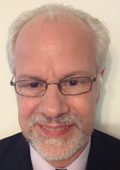 Stacy Cannady
Stacy Cannady Chief Security Scientist, Member of Trusted Computing Group
Once we worried about the security of our desktop computers. Then came increasingly powerful and connected mobile devices…which offered the keys to the kingdom to anyone willing to spend a bit of time attacking them. Now, in addition to our continuing concerns about devices we now see as powerful computers, we must look to securing the next generation of connected devices. But these devices don't fit on the desktop or even in the hand. They instead are scattered around the home, the office, the manufacturing plant, the retail store and even on the highway. Home appliances, cars, personal fitness devices, medical devices, factory automation systems, thermostats and security systems, even a smoke detector - these all fit in the Internet of Things. Therefore, security must be considered. This talk will address some key issues and core concepts of IoT security including the possible role of trust and use of existing and evolving industry standards. Attendees will get a new perspective on embedded strong security into a variety of devices. This session includes discussion of several security architectures already deployed in IoT devices and includes resources for the tools used to implement those architectures (mostly available for free).
About Stacy Cannady
Stacy Cannady, CISSP, is technical marketing - Trustworthy Computing TRIAD (Threat Response, Intelligence, and Development) for Cisco and a member of the Trusted Computing Group's Embedded Systems Work Group. He is an alternate board member representing Cisco. Stacy has worked in the field of trusted computing for a number of years. As a subject matter expert in trusted computing, his responsibilities require an in-depth understanding of the trusted computing market, including advances in hardware and software security as well as vendor and customer market dynamics. Prior to his work with Cisco, Stacy was responsible for marketing leadership for trusted computing at DMI, IBM and at Lenovo. At IBM, he played a principal role in making the TPM standard equipment in ThinkPad and ThinkCenter PCs. This created competitive pressure in the PC market and led to broad market acceptance of the TPM as standard equipment in enterprise-class PCs. Stacy was also responsible for the security product strategy for IBM's PC Division and for Lenovo for eight years. This strategy required subject matter expertise in firmware security, biometrics, smart cards, identity management, encryption and access control. Additionally, at Lenovo, he was also responsible for incident response and served as Privacy Manager for the Software & Peripherals Business Unit.
The Origins of Silicon Valley: Why and How It Happened
Paul Wesling - IEEE SF Bay Area Communications Director
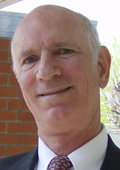 Paul Wesling
Paul Wesling IEEE SF Bay Area Communications Director
Why did Silicon Valley come into being? The story goes back to local Hams (amateur radio operators) trying to break RCA's tube patents, the sinking of the Titanic, Naval ship communications requirements, Fred Terman and Stanford University, local invention of high-power tubes (gammatron, klystron), WW II and radar, William Shockley's mother living in Palo Alto, and the SF Bay Area infrastructure that developed -- these factors pretty much determined that the semiconductor and IC industries would be located in the Santa Clara Valley. Paul Wesling, a CPMT Society Distinguished Lecturer, will give an exciting and colorful history of device technology development and innovation that began in San Francisco and Palo Alto, moved down the Peninsula (seeking lower costs and better housing), and ended up in the Santa Clara Valley of California during and following World War II. You'll meet some of the colorful characters -- Lee DeForest, Bill Eitel, Charles Litton, Fred Terman, David Packard, Bill Hewlett and others -- who came to define the worldwide electronics industries through their inventions and process development. He'll end by telling us about some current organizations that keep alive the spirit and forward-looking technology development of the Hams, the Homebrew Computer Club, and the other entrepreneurial groups where geeks gather to invent the future.
About Paul Wesling
Paul Wesling received his BS in electrical engineering and his MS in materials science from Stanford University. Following assignments at GTE/Lenkurt Electric, ISS/Sperry-Univac, Datapoint Peripheral Products (VP - Product Integrity), and Amdahl (mainframe testing), he joined Tandem Computer in Cupertino (now part of Hewlett Packard) in 1985. He designed several multi-chip module prototypes, managed Tandem's Distinguished Lectures series, and organized a number of advanced technology courses for his Division and also for the IEEE. He managed a grant from the National Science Foundation for the development of multimedia educational modules. Paul retired from HP in 2001, and now serves as the Communications Director for the IEEE S.F. Bay Area's Council. Paul is the Publications Chair for ISQED. As the CPMT Society's vice president of publications from 1985 through 2008, he supervised four archival journals and a newsletter. He is a Fellow of the IEEE, and received the IEEE Centennial Medal, the Board's Distinguished Service award, the Society Contribution Award, and the IEEE's Third Millennium Medal. He has organized over 500 courses for the local IEEE chapter in the Santa Clara Valley (Silicon Valley), many of them held at Stanford University (and, more recently, at Silicon Valley company facilities). He served as scoutmaster of his local Boy Scout Troop for 15 years, was Advisor of a High-Adventure Crew, and enjoys backpacking, fly fishing, guitar and amateur radio (call sign: KM6LH).

